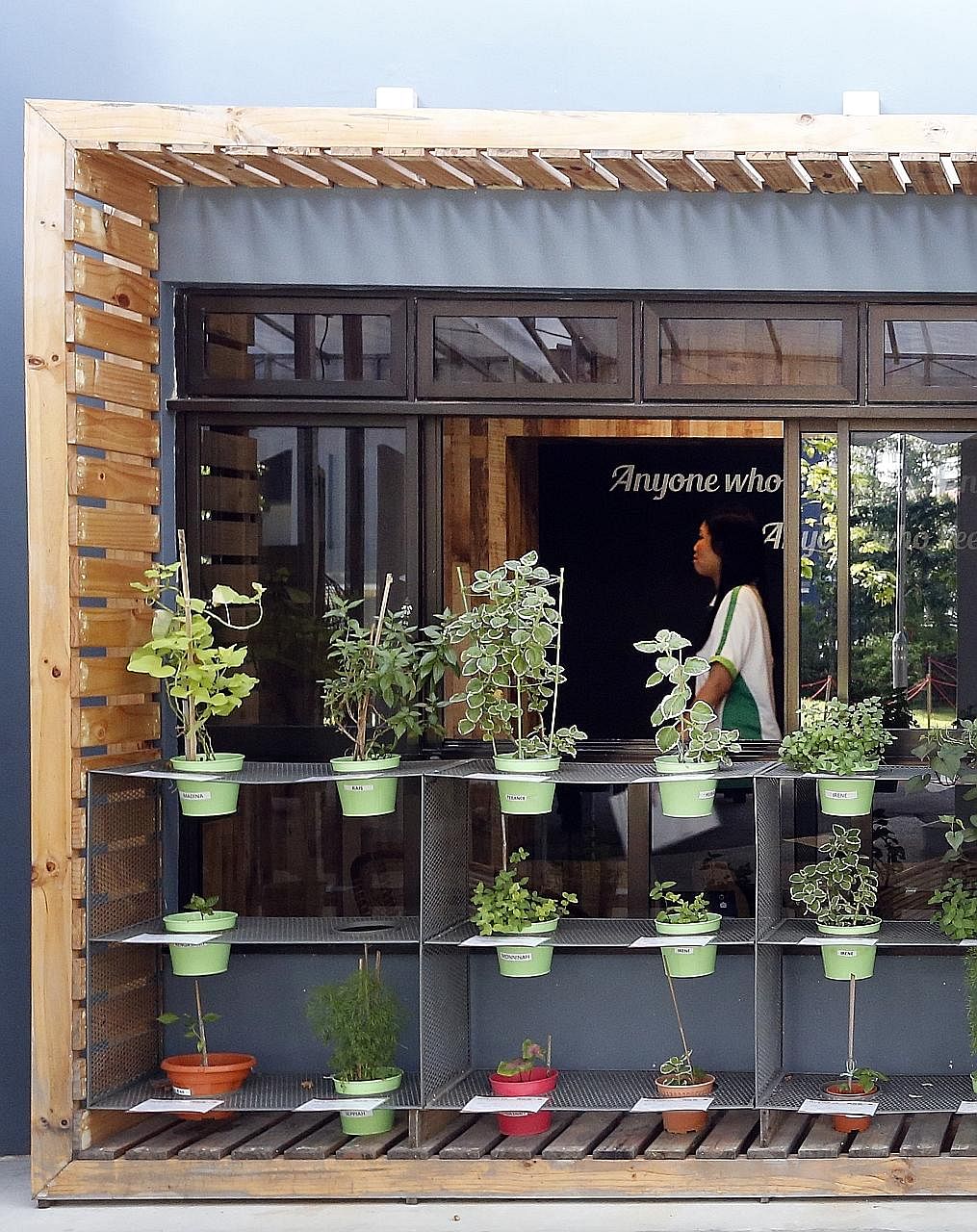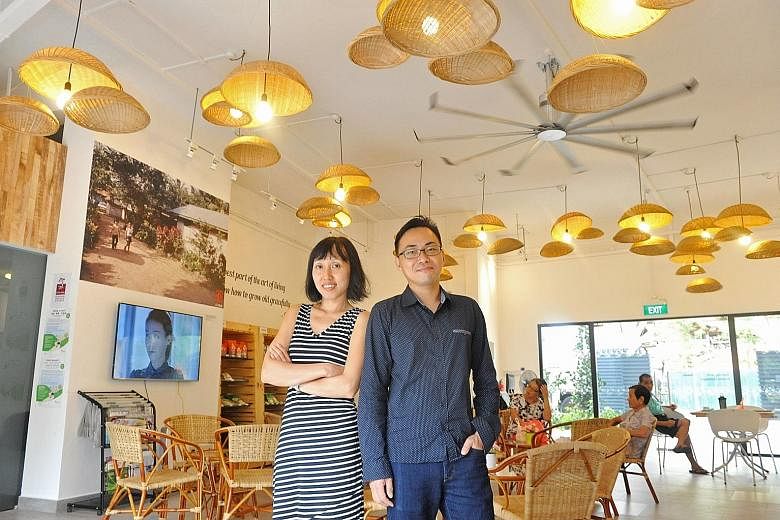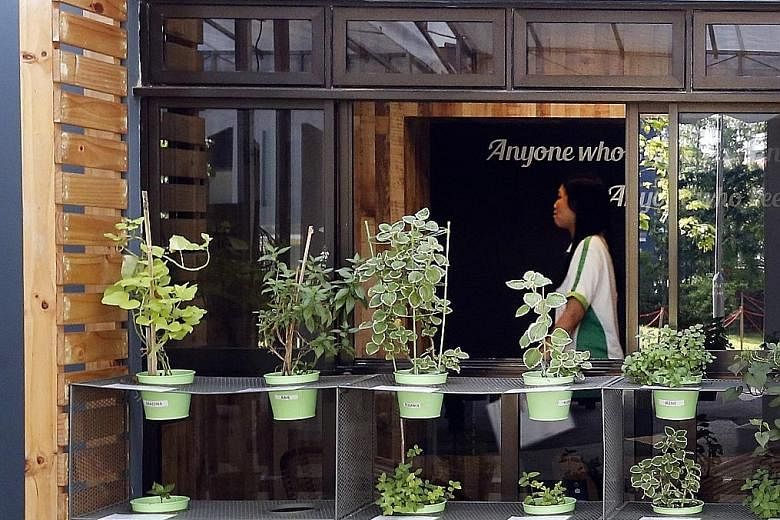Located in a Housing Board void deck in Marsiling Heights, SilverCove might seem like any other senior wellness centre, offering exercise equipment, health services and social activities.
What sets it apart though is that the seniors who use the facility had a say in its design.
Retiree Rosaline Savirimuthu, 66, is one of the 30 seniors who contributed their ideas for SilverCove, at the invitation of NTUC Health, which runs the centre, and design firm Colours: Collectively Ours.
Armed with red and yellow Post-it notes in January last year, they pored over proposed designs for the centre, and shared their preferences - indicating their dislikes with a red Post-it note and likes with a yellow one.
Madam Savirimuthu suggested having a garden as she thought the greenery would look nice.

While a conventional garden was not possible due to a lack of space, the seniors still got their spot of oasis - a vertical garden built into the centre's outer wall.
"In the evening, we'll talk while watering the plants," said Madam Savirimuthu, who lives in a studio apartment above the centre.
The consultative approach is part of a design movement that is still relatively new to Singapore. In community participatory design, end users are involved in the process of designing a space. It started in the 1960s in the Scandinavian countries, and later spread to Britain and the United States.
Colours is headed by Dr Chong Keng Hua, assistant architecture professor at the Singapore University of Technology and Design (SUTD), and Ms Kang Fong Ing, adjunct assistant architecture professor at SUTD. Both specialise in community participatory design.
Said Dr Chong: "The process is slower but, if we do it slow in the beginning, it'll be a lot more efficient in the future, rather than doing it fast now, and facing all the problems that come later."
He added: "People are more vocal now. They believe there's something they can do differently in their own neighbourhood... Professionals like us come in to facilitate the design process."
In the case of SilverCove, which officially opened in April, standard interior design would have turned the void deck into a corridor lined with rooms, said Dr Chong, 39.
He added that the seniors like the airiness of the high ceiling and the central communal area of the centre, both of which would not have been achieved in standard design.
Said retiree Doris Yeo, 58: "With a big (central) area, everyone can say hello, everyone knows each other. It's like back to the kampung days."
Mr Leon Luai, head of residential and home care at NTUC Health, said the design of SilverCove allows for greater flexibility.
He added: "We felt that if the seniors took part in the design process, there will be greater ownership, and hence participation subsequently."
SilverCove won two awards - Best Approach to Support Ageing-in-Place and Best Silver Architecture (Community Spaces) - at the 4th Asia Pacific Eldercare Innovation Awards in April this year.
Executive director of the Disabled People's Association, Dr Marissa Lee, said participatory design can benefit those with disabilities.
Citing an example, she said: "Lowered sinks in bathrooms were designed to help wheelchair users access the sink. Yet, the tap is often too far back for them to reach it.
"If a wheelchair user was involved in the design process, they might have spotted this design flaw at the planning stage."
Participatory design is not limited to designing spaces for groups with special needs though.
Colours worked with the Urban Redevelopment Authority in 2014 and last year to bring about Park(ing) Day, an event where individual parking spaces are turned into public areas for communal activities. The idea originated in the US.
Some past ideas for Park(ing) Day included playing a game of table tennis, zipping back and forth on a garden swing, and free barber services at the transformed spaces.
SUTD undergraduate Jezamine Chua, 21, who contributed to the design of SilverCove, is a believer in community participatory design.
"Only by directly interacting and engaging with the end users are we able to put ourselves in their shoes, leverage on their strengths and put their visions to action," said the architecture student.


